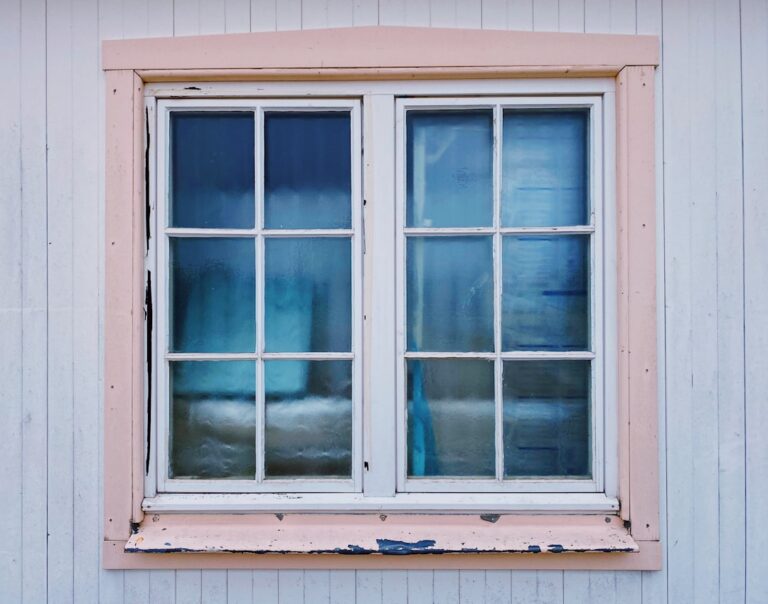Window insulation plays a crucial role in maintaining a comfortable indoor environment, particularly during extreme weather conditions. It serves as a barrier against drafts, heat loss, and unwanted noise, significantly enhancing the overall energy efficiency of a home. When windows are poorly insulated, they can account for a substantial portion of heat loss in winter and heat gain in summer, leading to increased energy bills and discomfort.
By investing in proper window insulation, homeowners can create a more stable indoor climate, reduce their reliance on heating and cooling systems, and ultimately save money on energy costs. Moreover, effective window insulation contributes to environmental sustainability. By minimizing energy consumption, insulated windows help reduce the carbon footprint associated with heating and cooling homes.
This is particularly important in an era where climate change is a pressing concern. Homeowners who prioritize window insulation not only improve their living conditions but also contribute to a larger movement towards energy efficiency and environmental responsibility. Understanding the importance of window insulation is the first step toward creating a more comfortable and sustainable home.
Key Takeaways
- Proper window insulation is important for energy efficiency and maintaining a comfortable indoor temperature.
- Choose insulation materials such as foam, weather stripping, and window film to effectively insulate your windows.
- Prepare your windows by cleaning and repairing any damage before applying insulation materials.
- Install weather stripping to seal gaps and prevent drafts from entering your home.
- Use window film and DIY insulation panels to further enhance the insulation of your windows.
Choosing the Right Insulation Materials for Your Windows
Selecting the appropriate insulation materials for windows is essential for achieving optimal energy efficiency. Various options are available, each with its unique properties and benefits. For instance, materials such as foam board, fiberglass, and cellulose are commonly used for insulating windows.
Foam board is known for its high insulating value and moisture resistance, making it an excellent choice for areas prone to humidity. Fiberglass insulation, on the other hand, is lightweight and easy to install, providing effective thermal resistance at a relatively low cost. Another popular option is reflective insulation, which works by reflecting radiant heat away from living spaces.
This type of insulation is particularly beneficial in warmer climates where cooling costs can be significant. Homeowners should consider their specific needs, local climate conditions, and budget when selecting insulation materials. By carefully evaluating these factors, they can choose the most suitable option that will enhance their home’s energy efficiency while also fitting within their financial constraints.
Preparing Your Windows for Insulation
Before embarking on the insulation process, it is vital to prepare the windows adequately. This preparation involves cleaning the window frames and sills to ensure that no dirt or debris interferes with the insulation materials’ adhesion. A thorough cleaning not only enhances the effectiveness of the insulation but also prolongs its lifespan.
Homeowners should use a mild detergent and water solution to wipe down the surfaces, followed by a dry cloth to remove any moisture. Additionally, inspecting the windows for any existing damage is crucial during this preparation phase. Cracks or gaps in the window frames can undermine the effectiveness of insulation efforts.
If any issues are identified, they should be addressed before proceeding with insulation installation. This may involve repairing or replacing damaged window frames or seals. By taking these preparatory steps, homeowners can ensure that their insulation efforts will yield the best possible results.
Installing Weather Stripping for Added Insulation
| Metrics | Data |
|---|---|
| Energy Savings | Up to 20% reduction in heating and cooling costs |
| Material Cost | Approximately 5 to 10 per window or door |
| Time to Install | Average of 1-2 hours for a standard-sized door or window |
| Effectiveness | Reduces drafts and improves indoor comfort |
Weather stripping is an effective method for enhancing window insulation and preventing drafts from entering a home. This material is designed to seal gaps around windows, ensuring that air does not escape or enter through these openings. There are various types of weather stripping available, including adhesive-backed foam tape, V-strip, and door sweeps.
Each type has its advantages and can be chosen based on the specific needs of the windows being insulated. To install weather stripping, homeowners should first measure the dimensions of the gaps around their windows accurately. Once the measurements are taken, they can cut the weather stripping to size and apply it along the edges of the window frame.
It is essential to press firmly to ensure a secure bond. Properly installed weather stripping can significantly reduce air leakage, making it an invaluable addition to any window insulation project. This simple yet effective solution can lead to noticeable improvements in indoor comfort and energy efficiency.
Using Window Film for Insulation
Window film is another innovative solution for enhancing window insulation. This thin layer of plastic film can be applied directly to the glass surface of windows, creating an additional barrier against heat transfer. Window films come in various types, including reflective films that block UV rays and low-emissivity (low-E) films that reduce heat loss during colder months while keeping interiors cool in summer.
Applying window film is a relatively straightforward process that can be accomplished by most homeowners with minimal tools. The first step involves cleaning the window thoroughly to ensure proper adhesion of the film. Once clean, homeowners can cut the film to size and apply it using a solution of water and soap to facilitate positioning without bubbles or wrinkles.
After smoothing out any imperfections, the film can be trimmed for a neat finish. The benefits of window film extend beyond insulation; it also protects furnishings from fading due to UV exposure while enhancing privacy.
Making DIY Insulation Panels for Your Windows
For those looking for a more hands-on approach to window insulation, creating DIY insulation panels can be an effective solution. These panels can be made from various materials such as foam board or even old blankets and quilts. The process begins with measuring each window’s dimensions accurately to ensure a snug fit for the panels.
Once measurements are taken, homeowners can cut their chosen insulating material to size. If using foam board, it can be easily cut with a utility knife or saw. For fabric-based panels, sewing may be required to create a cover that fits over the insulating material snugly.
After constructing the panels, they can be mounted in place using Velcro strips or magnetic tape for easy removal when needed. DIY insulation panels not only provide excellent thermal resistance but also allow homeowners to customize their designs according to personal preferences.
Sealing Gaps and Cracks Around Windows
In addition to installing insulation materials, sealing gaps and cracks around windows is essential for maximizing energy efficiency. Even small openings can lead to significant heat loss or gain, undermining all other insulation efforts. Homeowners should conduct a thorough inspection of their windows to identify any potential leaks or cracks that may require sealing.
Caulking is one of the most effective methods for sealing gaps around windows. A high-quality caulk can be applied along the edges of window frames where they meet walls or other surfaces. It is important to choose a caulk that is suitable for exterior use and can withstand varying weather conditions.
For larger gaps, expanding foam sealant may be necessary to fill voids effectively. By taking the time to seal these openings properly, homeowners can significantly enhance their window insulation’s overall effectiveness.
Using Thermal Curtains for Added Insulation
Thermal curtains are an excellent addition to any window insulation strategy, providing an extra layer of protection against temperature fluctuations. These specially designed curtains are made from thick materials that help trap air between the fabric layers, creating an insulating barrier that reduces heat transfer through windows. In addition to their insulating properties, thermal curtains also offer privacy and light control.
When selecting thermal curtains, homeowners should look for options with a high thermal resistance rating and consider factors such as color and design to complement their interior decor. Installing thermal curtains is straightforward; they can be hung using standard curtain rods or tracks. For maximum effectiveness, it is advisable to ensure that the curtains cover the entire window area without leaving gaps at the sides or bottom.
By incorporating thermal curtains into their window insulation efforts, homeowners can enjoy enhanced comfort while also adding an aesthetic touch to their living spaces.
Maintaining Your Window Insulation
Maintaining window insulation is crucial for ensuring its long-term effectiveness and performance. Regular inspections should be conducted to check for any signs of wear or damage in insulation materials such as weather stripping or window film. If any issues are identified—such as peeling film or worn-out weather stripping—prompt repairs or replacements should be made to prevent further energy loss.
Additionally, homeowners should clean their windows regularly to remove dirt and debris that may accumulate over time. This not only helps maintain the appearance of windows but also ensures that insulation materials remain effective by allowing them to function without obstruction. By committing to regular maintenance practices, homeowners can extend the lifespan of their window insulation solutions and continue enjoying a comfortable indoor environment year-round.
Benefits of DIY Window Insulation
The benefits of DIY window insulation extend beyond mere cost savings; they encompass improved comfort levels and enhanced energy efficiency as well. By taking on this project themselves, homeowners gain a sense of accomplishment while actively contributing to their home’s sustainability efforts. DIY solutions often allow for greater customization compared to commercially available products, enabling individuals to tailor their approach based on specific needs and preferences.
Moreover, engaging in DIY projects fosters creativity and resourcefulness as homeowners explore various materials and techniques suited for their unique situations. The knowledge gained through this process empowers individuals with skills that can be applied in future home improvement endeavors. Ultimately, DIY window insulation not only enhances living conditions but also promotes a deeper connection between homeowners and their living spaces.
Enjoying a Warm and Cozy Home with DIY Window Insulation
In conclusion, investing time and effort into DIY window insulation offers numerous advantages that contribute to a warm and cozy home environment. From understanding the importance of proper insulation materials to implementing effective sealing techniques and utilizing innovative solutions like thermal curtains and window films, homeowners have various options at their disposal. Each step taken toward improving window insulation not only enhances comfort but also promotes energy efficiency and environmental sustainability.
As homeowners embrace these DIY projects, they cultivate a sense of pride in their ability to create a more inviting living space while reducing energy costs over time. The journey toward achieving optimal window insulation may require some initial investment in terms of time and resources; however, the long-term benefits far outweigh these efforts. Ultimately, by prioritizing DIY window insulation strategies, individuals can enjoy a warm and cozy home while contributing positively to both their finances and the environment.
FAQs
What is DIY window insulation?
DIY window insulation refers to the process of using various materials and techniques to improve the energy efficiency of windows in a home or building. This can help to reduce heat loss, improve comfort, and lower energy bills.
Why is DIY window insulation important?
DIY window insulation is important because windows are a common source of heat loss in buildings. By improving the insulation around windows, it is possible to reduce energy consumption, improve comfort, and lower heating costs.
What are some common DIY window insulation methods?
Common DIY window insulation methods include using weather stripping, caulking, window film, thermal curtains, and draft stoppers. These methods can help to reduce drafts and improve the overall insulation of windows.
What are the benefits of DIY window insulation?
The benefits of DIY window insulation include improved energy efficiency, reduced heat loss, increased comfort, and lower energy bills. Additionally, DIY window insulation can help to reduce the environmental impact of a building by lowering energy consumption.
Are there any drawbacks to DIY window insulation?
Some potential drawbacks of DIY window insulation methods include the initial cost of materials and the time required to install them. Additionally, certain methods may affect the appearance of windows or limit their functionality. It is important to carefully consider the pros and cons of each method before proceeding.






